A tian of colourful summer vegetables is one of Provence's most loved dishes. In our French family home near Apt, we make it every summer - and yes, the photos here were taken in my in-laws' garden with the Luberon hills in the distance. Let's look at what "tian" really means, how it differs from ratatouille, and why this easy vegetable bake is perfect for make-ahead summer entertaining.

What Does "Tian" Mean in French?
In Provence, a tian is first the name of the dish itself - the ovenproof stoneware, terracotta or ceramic dish it's baked in. Think of it as the Provençal cousin to the Berber Tagine.
Over time, tian also came to mean the food cooked inside: a layered vegetable gratin, sometimes with meat or fish. There are countless variations: from the classic vegan tian of summer vegetables to versions with anchovies, cod and spinach, or lamb with white beans. Here in the Luberon, a popular variation combines potatoes, onions, tomatoes, and cheese.

What is an Authentic French Tian?
A vegetable Tian is a Provençal baked dish of neatly layered, thinly sliced roasted vegetables (see below), roasted slowly with a drizzle of olive oil and aromatic herbs until tender and full of flavour.
Traditionally, the dish is glazed, terracotta or ceramic and relatively deep, allowing the vegetables to be stacked tightly so they keep their juices and don't dry out.
What is a Tian on a Menu?
The most popular summer tian is this vegan summer dish, made only with vegetables, olive oil and aromatic herbs. Andrée Maureau, 'Recettes en Provence' makes many versions in her book - variations include meat (pork, lamb), eggs, or fish (anchovies, cod and spinach in Carpentras). In Apt, potatoes are added.
How to Pronounce Tian in French: say tee-ong very quickly.

Tian vs Ratatouille - What's the Difference?
Tian and ratatouille share the same Provençal roots and ingredients. Ratatouille is originally from Nice, like the classic Niçoise salad. The difference is in the method:
- Tian - baked in the oven in colourful layers in its traditional glazed ovenware dish
- Ratatouille - a rustic vegetable stew cooked on the stovetop, more saucy and less structured.
What does a ratatouille and tian have in common? They use the same ingredients. According to my culinary Larousse Gastronomique dictionary and Gaudry's On Va Déguster la France, both officially use aubergines (eggplant), courgettes (zucchini), onion, tomatoes (not cherry tomatoes), bell pepper, garlic, thyme, bay leaves and olive oil. Add fresh basil or parsley just before serving for added flavour and vitamins.
Although my mother-in-law, Madeleine is totally opposed! She says a tian is basically onions, courgettes, tomatoes and all the rest is optional - so who am I to argue?
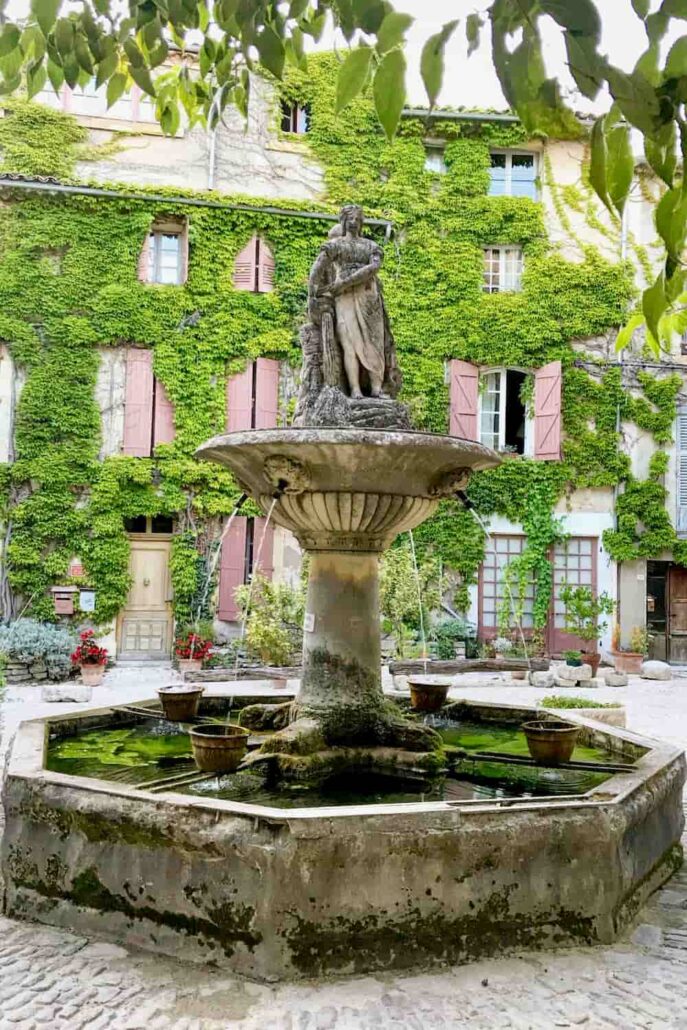
Summer Cooking in Provence - Make a Tian Ahead
In Provence, summer heat can soar to 30-40°C (85-105°F), even with the cooling Mistral wind. Locals beat the heat by cooking in the cooler morning hours, ready for later. I do the same: I prepare the tian early, bake it, let it cool, and refrigerate. By evening, it just needs a quick 10-minute warm-up in the oven before serving under the olive trees.
The rest time only improves the flavour, and any leftovers are glorious the next day.
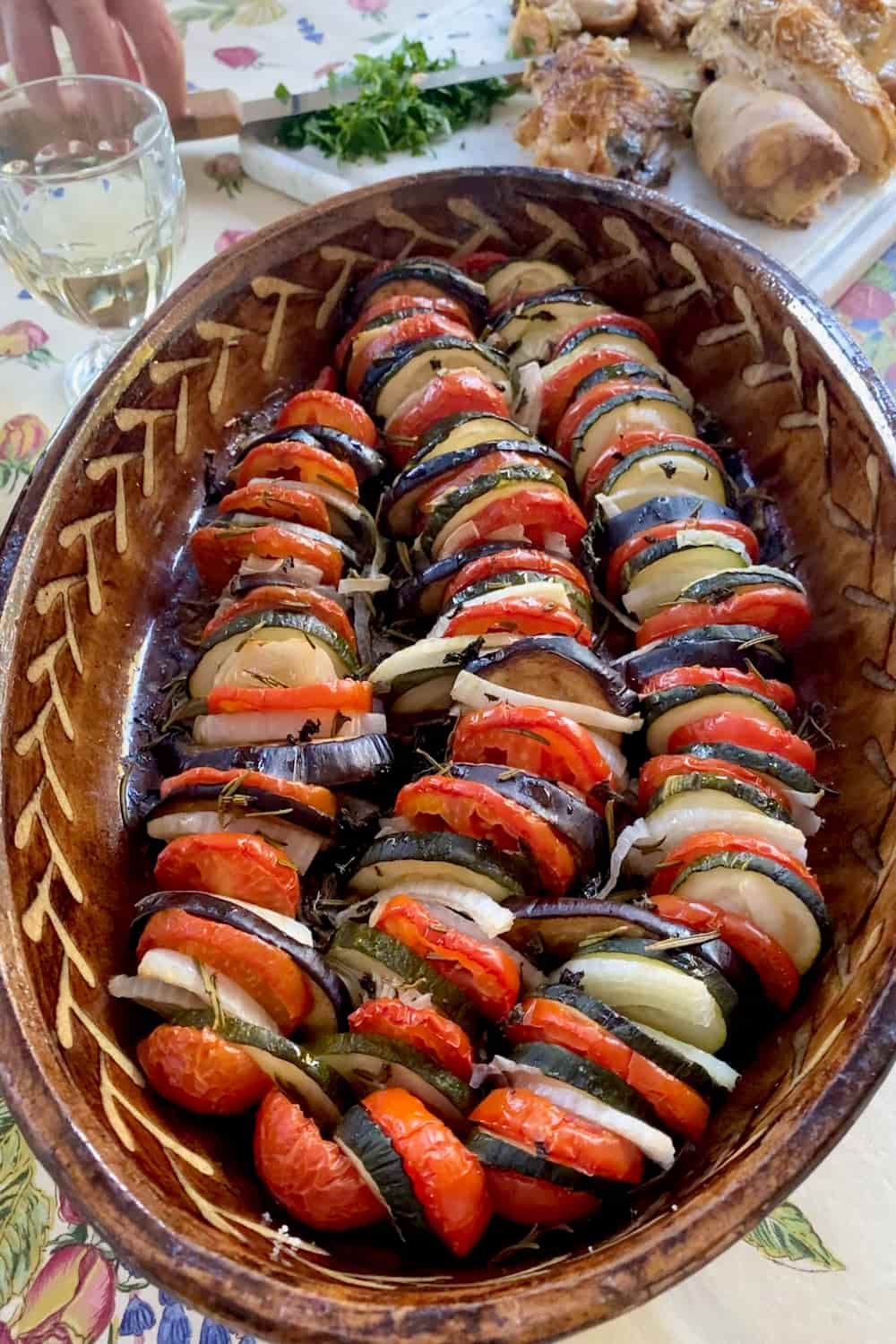
Classic Provençal Tian Seasoning
For authentic flavour, use the herbs found in a Provençal bouquet garni:
- Bay leaf
- Rosemary
- Thyme
If you don't have fresh herbs, a teaspoon of dried Herbes de Provence works well. Add chopped fresh parsley or fresh basil leaves just before serving to keep their flavour and vitamin C content.
Season with a few mill turns of black pepper and a generous pinch of fleur de sel salt. A word on olive oil - please use the best quality you can find for taste, as it does make all the difference to your veggies. Avoid using cooking spray.
For more, see my post on fresh aromatic herbs
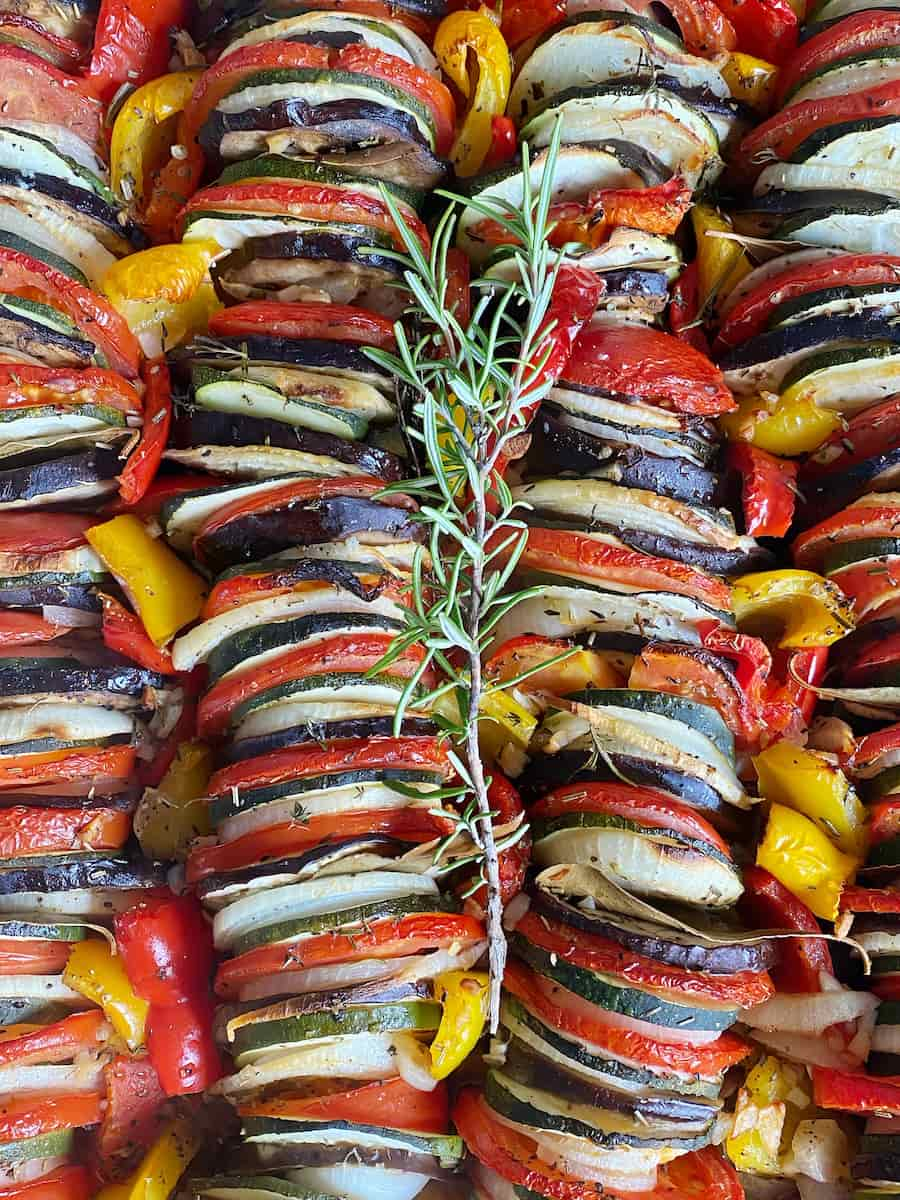
What to Serve with Roasted Summer Vegetables
This tian of roasted summer vegetables is one of these fabulously French easy dinners that's normally served directly from the dish at the table. It pairs beautifully with:
- Grilled meats or fish
- BBQs
- Roasted chicken from the market.
It's naturally vegan, gluten-free, and best made in summer, when the vegetables are at their freshest and most flavourful in season.
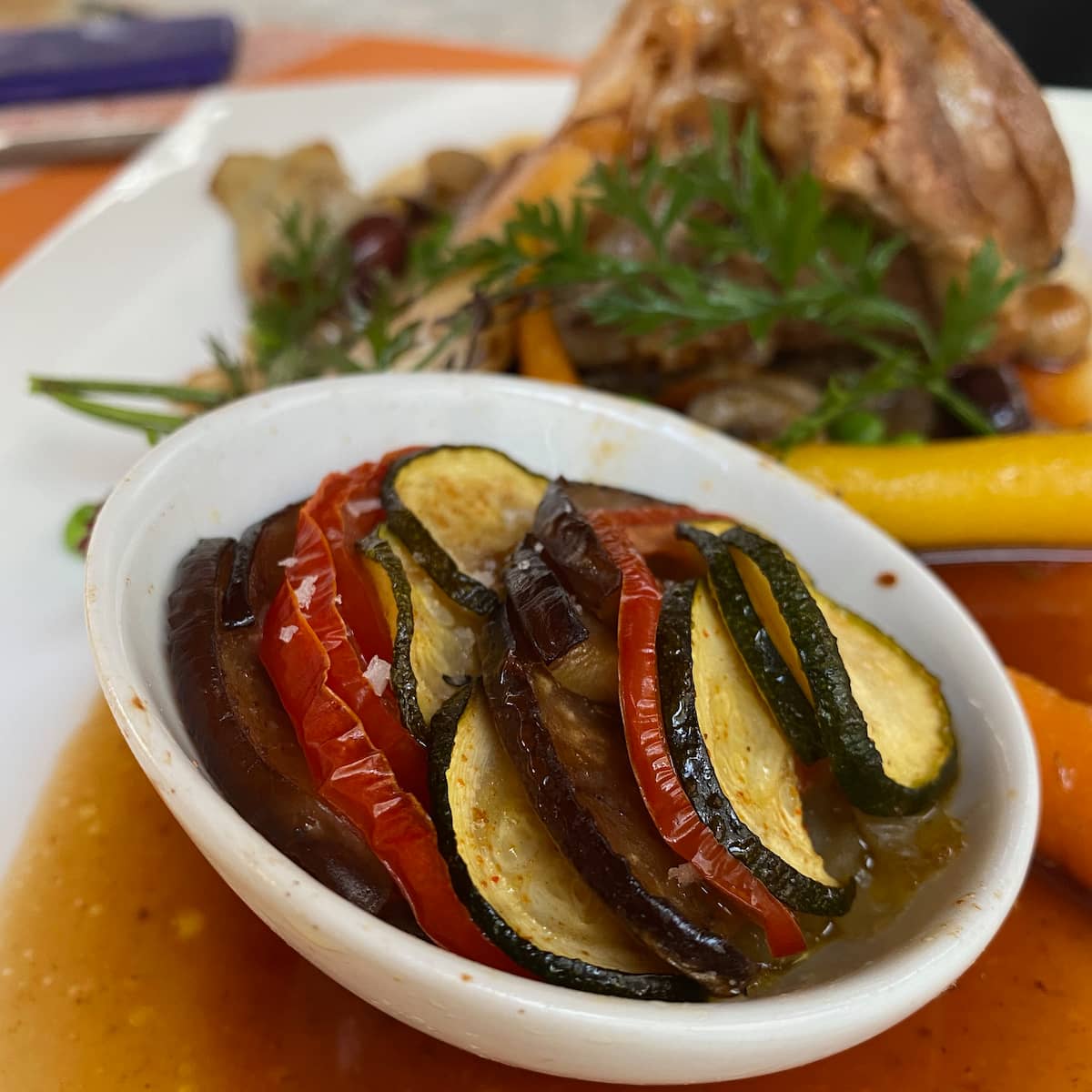
Family-Tested Tips for a Juicy Tian
I often pre-cook the onions and garlic in olive oil before layering, which makes it extra juicy. But, after years of making tians, I often skip that step and scatter copped garlic directly in the dish, then pack the sliced vegetables tightly on top.
The secret to avoiding a dry tian? Bake for about 45 minutes - long enough to concentrate the juices, but not so long that the vegetables shrivel. If you find they're browning, cover with aluminium foil.

If you love roasted summer vegetables, try my oven roasted tomatoes with mozzarella or Mediterranean style Stuffed Zucchini with ricotta.
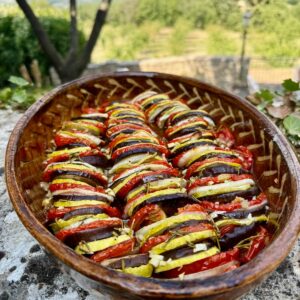
Tian de Légumes - Provençal Roasted Vegetable Bake
Equipment
- 1 ceramic ovenproof dish or non-stick roasting tin
Ingredients
- 2 courgettes (zucchini) sliced diagonally
- 1 small aubergine (eggplant) cut into slices
- 4 firm/ripe tomatoes sliced
- 1 white onion sliced
- 1 red pepper sliced (optional)
- 2 cloves garlic finely chopped
- 3 tablespoon olive oil extra virgin
- 1 tablespoon fresh thyme or rosemary finely chopped (or 1 teaspoon dried Herbes de Provence)
- 2 bay leaves
- 1 tablespoon fresh parsley or basil finely chopped, to serve
Instructions
- Cut the tomatoes, onion, courgettes and aubergine into slices no bigger than 1cm. Peel and core the garlic cloves, discarding any middle shoot and chop or grate finely.
- Preheat the oven to 200°C/400°F (180°C fan/Gas 6).
- Scatter over the chopped/grated garlic over the base of the dish with the bay leaves. Stack each slice alternately and tightly together, directly into the dish in rows. (If a vegetable is much larger than the other, cut in half). When arranged to completely cover the dish, sprinkle over the chopped rosemary or thyme (or dried herbs). Dribble over evenly the olive oil and season with salt and pepper.
- Bake for about 45 minutes until the vegetables are slightly browned and still very soft. If browning too much towards the end of cooking, cover with aluminium foil. To serve, scatter over the freshly chopped parsley or basil and add another pinch of fleur de sel salt and pepper.


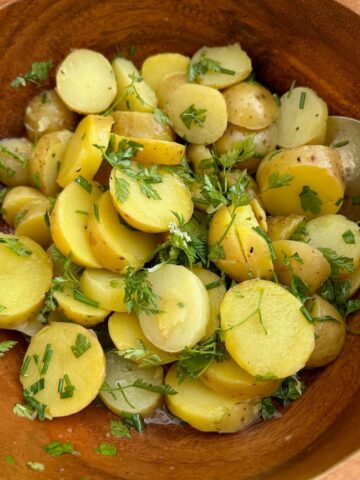
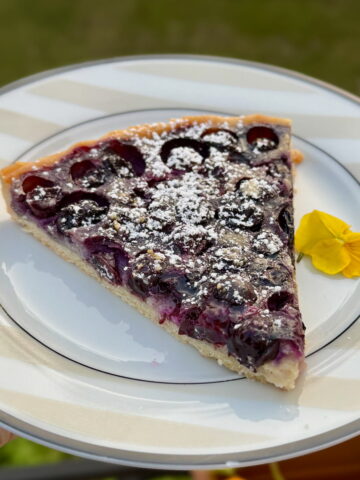
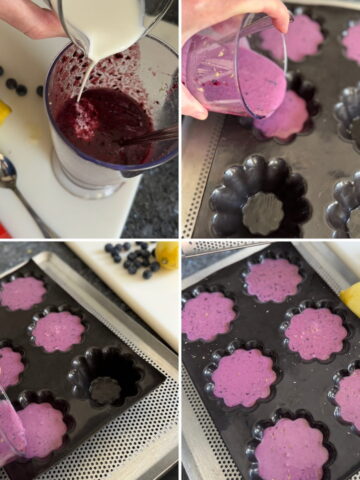

Please leave a comment